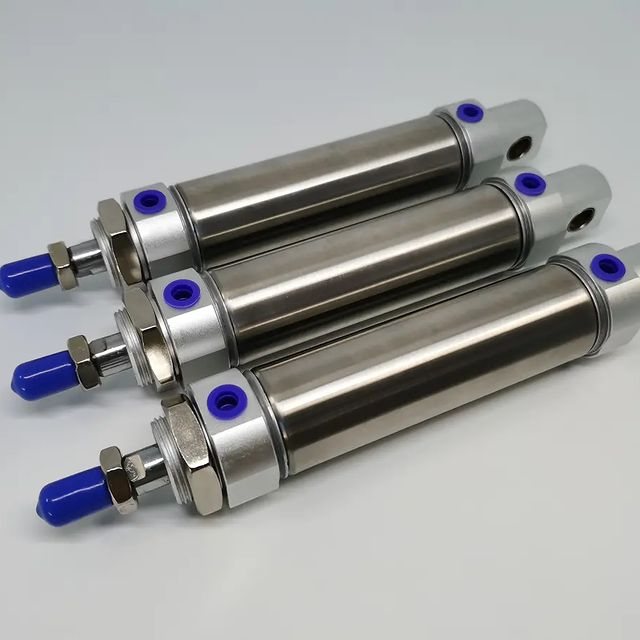Types and uses of cylinders
- 2024-04-20
- 26
In today's various automated processes, the most commonly used pneumatic component is the cylinder. It refers to the cylindrical metal part that guides the piston to perform linear reciprocating motion in the cylinder. The air expands in the engine cylinder to convert thermal energy into mechanical energy; the gas is compressed by the piston in the compressor cylinder to increase the pressure. There are many types of cylinders, the following are some common types:
1. Pen-shaped cylinder
Pencil cylinder, also known as mini cylinder (or micro cylinder, micro cylinder), is made of stainless steel and aluminum alloy; the characteristics of mini cylinder are: cheap price, compact structure, beautiful appearance, front and rear threaded installation and fixation, which can effectively save installation space and is suitable for High-frequency use requirements are often used in electronics, medical, packaging machinery and other industries.
Precautions for use:
1. A mounting bracket for the magnetic switch is required. The installation methods of the magnetic switch are divided into steel belt installation and track installation.
2. It is necessary to connect the piston rod and moving parts of the cylinder through a floating joint to make the moving parts move smoothly and prevent them from getting stuck.
3. It is best to leave a margin when selecting the cylinder stroke.

2. Thin cylinder
The thin cylinder takes up less space, has a lightweight structure, beautiful appearance, and can withstand large lateral loads. The barrel is square and can be directly installed on various fixtures and special equipment without installing accessories. Need to be used together with guide elements.

3. Dual-axis cylinder
Double-axis cylinder, also called double-linked cylinder, has two piston rods, and the guide part is a shorter copper sleeve. In order to prevent jamming, the double-axis has a certain degree of floating, and can only be used in positions with small lateral force. Can be shaken. Because it is installed and fixed in the form of an embedded body, it saves space. The biaxial cylinder has certain guiding, bending and torsion resistance capabilities, and can withstand certain lateral loads. There is an anti-collision pad at the front end of the cylinder that can adjust the stroke of the cylinder and alleviate the impact. It has a greater output than a single-axis cylinder.
4. Guide rod cylinder
The cylinder with guide rod integrates two parallel guide rods parallel to the piston rod and the motorcycle cylinder. It has a compact structure, high guiding accuracy, and can withstand large lateral loads and moments. It can be used for blocking, loading, pushing, stamping, clamping and other occasions.
previous: Steam Solenoid Valve
